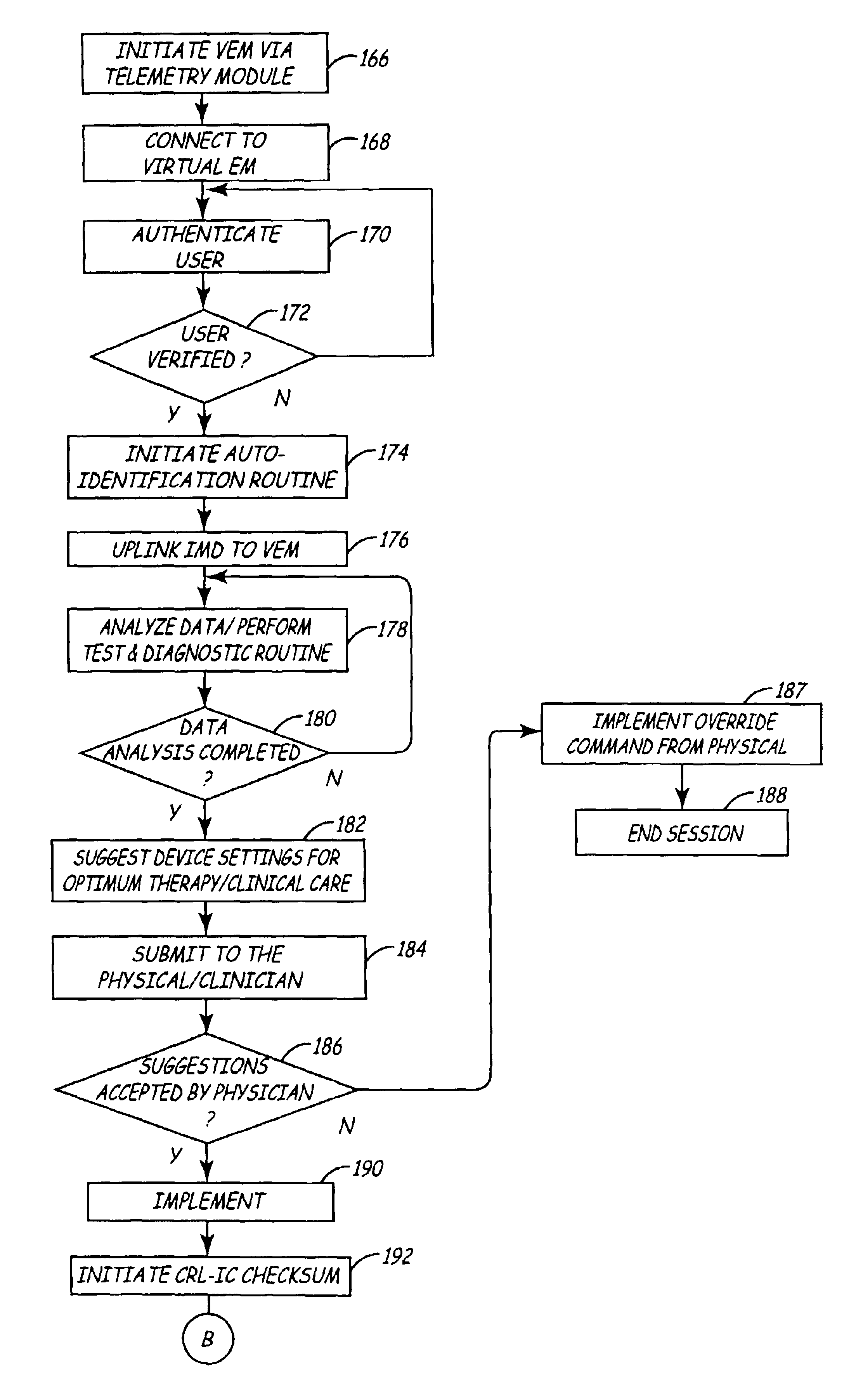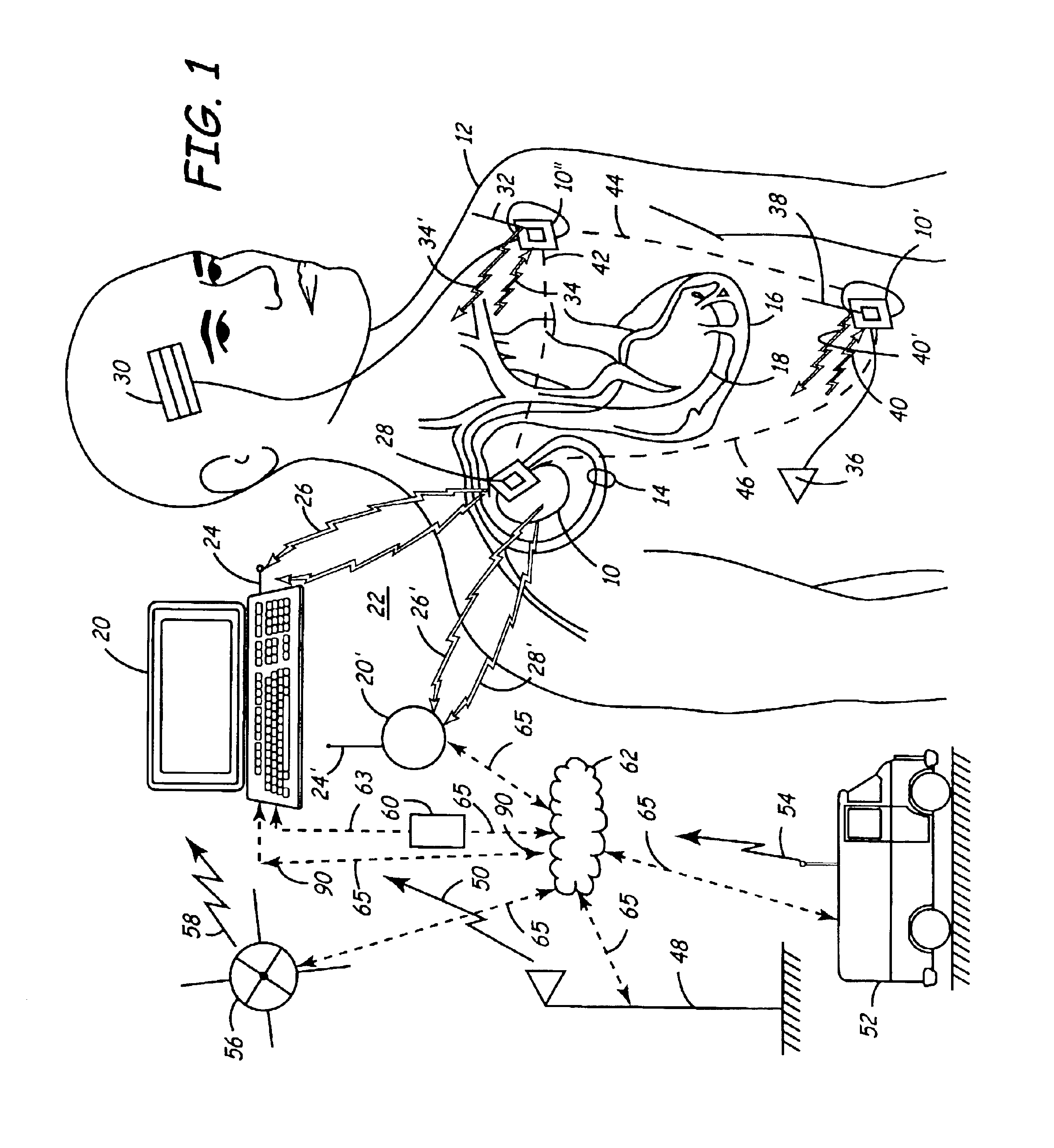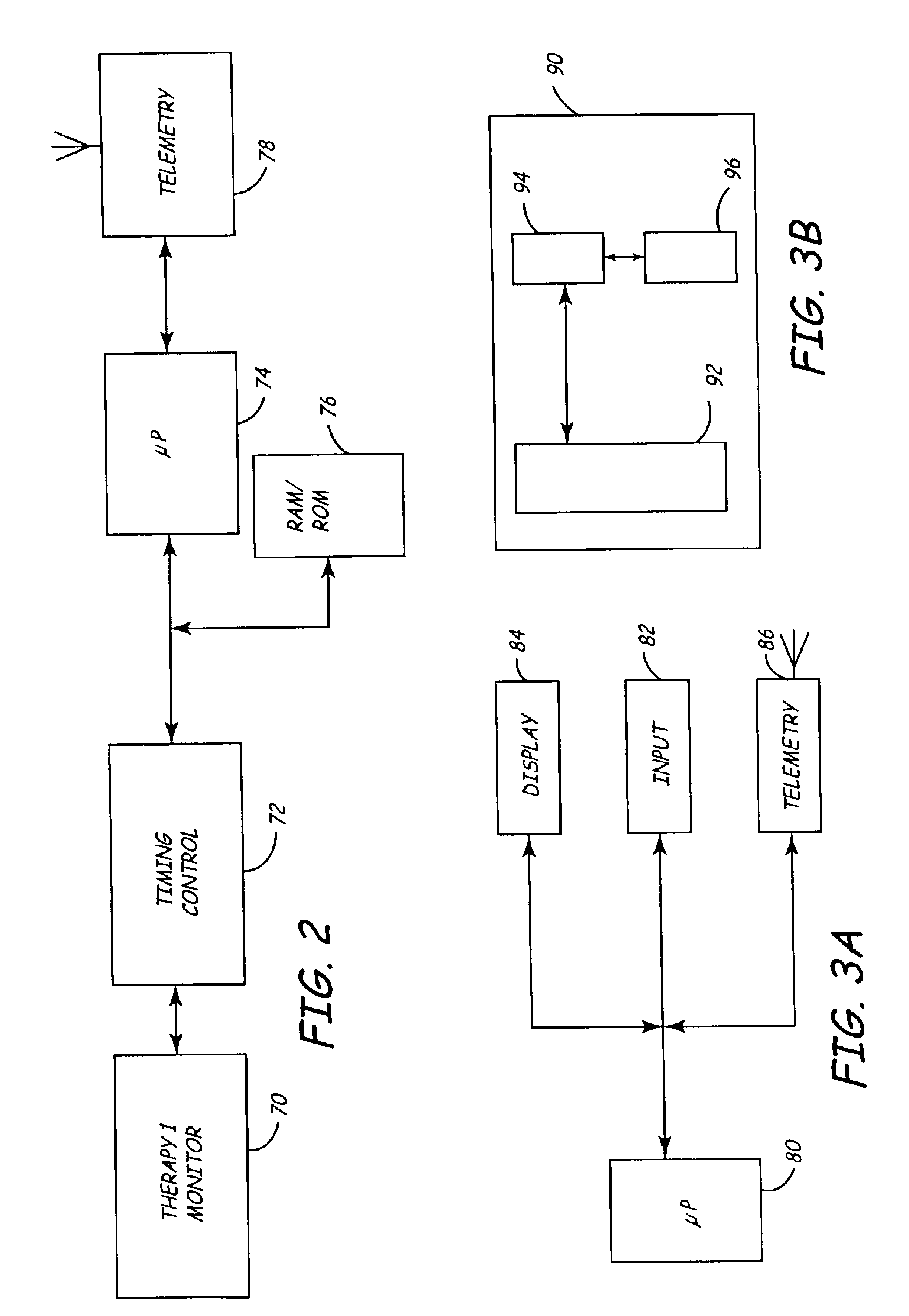Virtual remote monitor, alert, diagnostics and programming for implantable medical device systems
a medical device and virtual remote monitoring technology, applied in the field of virtual remote monitoring, alert, diagnostics and programming of implantable medical device systems, can solve the problems of patient having to go to the clinic, patient having to stay in a hospital indefinitely, and prior art clinical services are generally limited to in-hospital operations. , to achieve the effect of significant compatibility and scalability, remote communication
- Summary
- Abstract
- Description
- Claims
- Application Information
AI Technical Summary
Benefits of technology
Problems solved by technology
Method used
Image
Examples
Embodiment Construction
FIG. 1 is a simplified schematic of the major components of the present invention. Specifically, a bi-directional wireless communications system between programmer 20, interface medical unit 20′ and a number of implantable medical devices (IMDS) represented by IMD 10, IMD 10′ and IMD 10″ is shown. The IMDs are implanted in patient 12 beneath the skin or muscle. The IMDs are electrically coupled to electrodes 18, 30, and 36 respectively in a manner known in the art. IMD 10 contains a microprocessor for timing, sensing and pacing functions consistent with preset programmed functions. Similarly, IMDs 10′ and 10″ are microprocessor-based to provide timing and sensing functions to execute the clinical functions for which they are employed. For example, IMD 10′ could provide neural stimulation to the brain via electrode 30 and IMD 10″ may function as a drug delivery system that is controlled by electrode 36. The various functions of the IMDs are coordinated using wireless telemetry. Wirel...
PUM
 Login to View More
Login to View More Abstract
Description
Claims
Application Information
 Login to View More
Login to View More - R&D
- Intellectual Property
- Life Sciences
- Materials
- Tech Scout
- Unparalleled Data Quality
- Higher Quality Content
- 60% Fewer Hallucinations
Browse by: Latest US Patents, China's latest patents, Technical Efficacy Thesaurus, Application Domain, Technology Topic, Popular Technical Reports.
© 2025 PatSnap. All rights reserved.Legal|Privacy policy|Modern Slavery Act Transparency Statement|Sitemap|About US| Contact US: help@patsnap.com



